Samsung Galaxy S24 vs S23: what’s the difference?
It's old against new - is the S24 enough of an upgrade?

The Galaxy S24 and S24 Plus are Samsung’s newest mainstream flagship smartphones. But to anyone with one of the previous-gen S23 handsets in their pocket, it might not look like a massive upgrade for 2024. When it comes to the Galaxy S24 vs Galaxy S23, what has actually been improved – and what has stayed the same?
Samsung’s latest handsets have fully embraced AI, seen screen and battery upgrades, and promise multiple generations of software upgrades. But the overall design and camera hardware will feel very familiar indeed. Now I’ve fully reviewed the Galaxy S24 and its two bigger brothers – the Galaxy S24 Plus and Galaxy S24 Ultra, here’s how things stack up.
Design & display: Flat edges, super-thin bezels
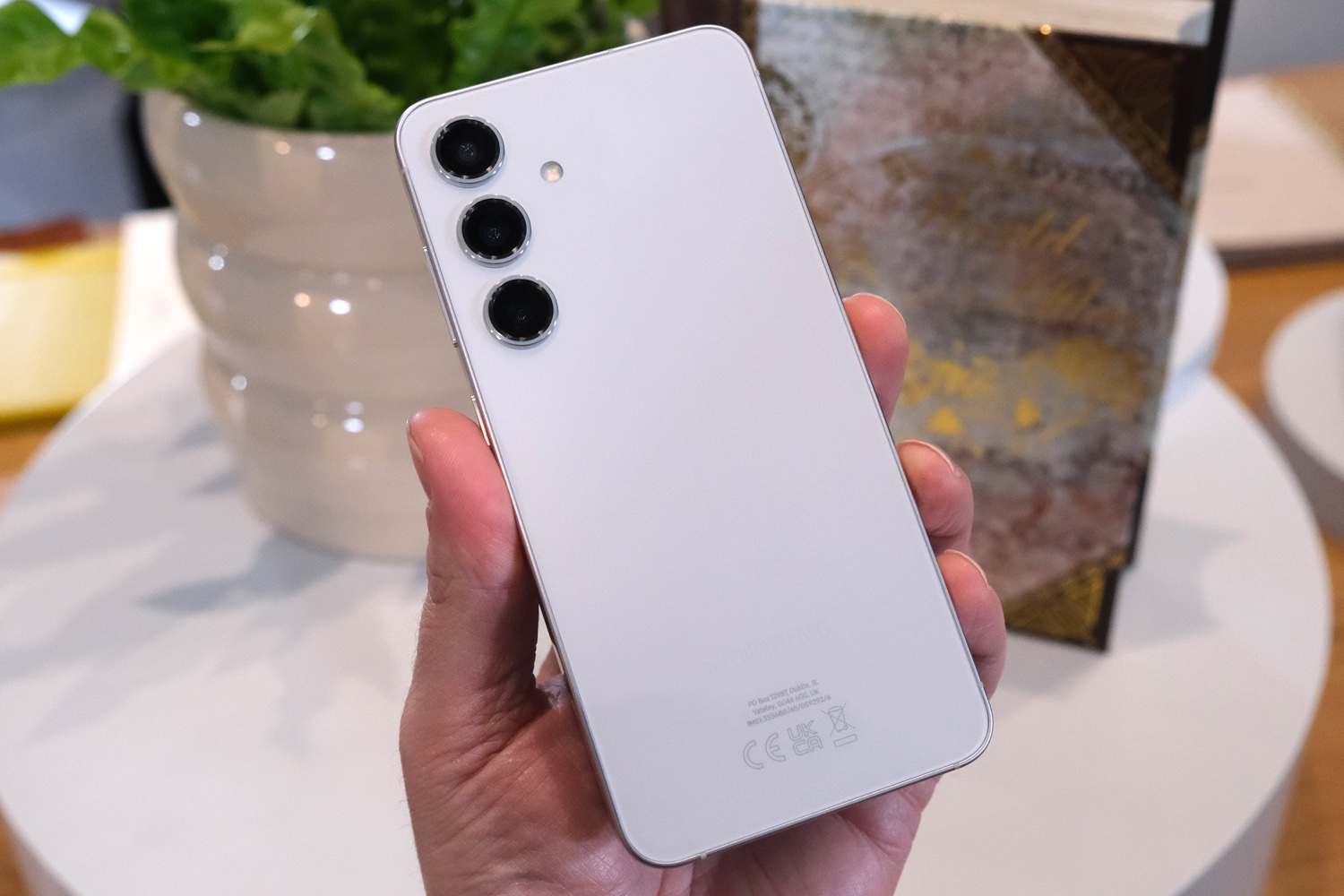
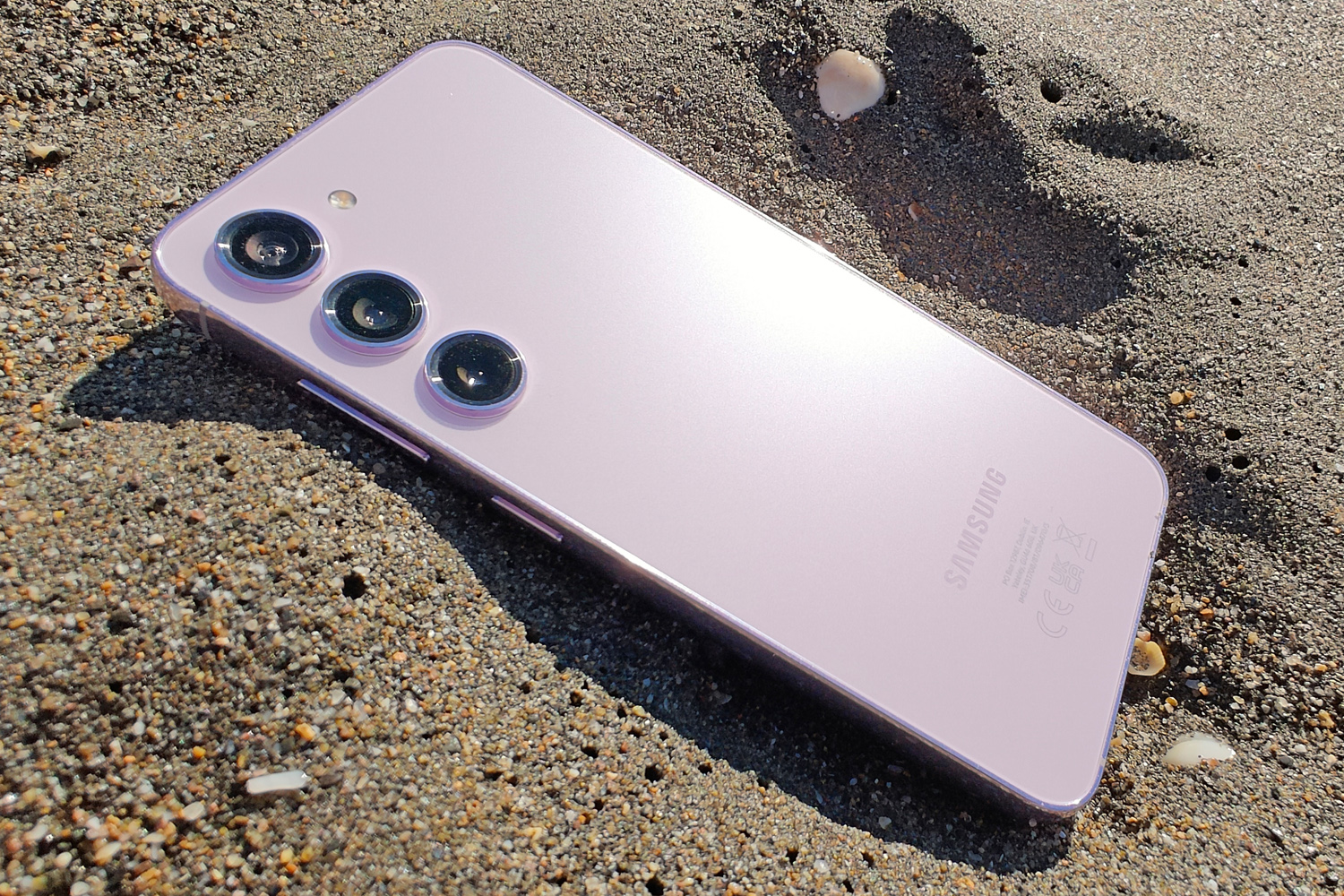
There hasn’t been a huge shift in design between Galaxy generations, but there are a few key changes. While the Galaxy S23 and S23 Plus had rounded edges across all four sides of the handset frame, the S24 and S24 Plus now have completely flat edges. The end result isn’t too dissimilar from that of, say, the iPhone 15, which is no bad thing.
The materials too, have been revamped, albeit slightly. While neither S24 handset receives the same titanium treatment as their more expensive Galaxy S24 Ultra counterpart, they have been upgraded with a new ‘armor aluminium’ frame, which, according to Samsung, is a lot more durable than last year’s offering. They’re both still slathered in Corning Gorilla Glass Victus 2 on the front and back, which should continue to offer protection against scrapes, scratches and the occasional drop. They’re also both IP68 dust and water-resistant.
In terms of handset colours, there are a few funky finishes to choose from this year. The Galaxy S24 is available in mostly pastel hues consisting of Amber Yellow, Cobalt Violet, Marble Gray and Onyx Black (with a few shades available exclusively on the Samsung web store). This is in contrast to the Galaxy S23’s Phantom Black, Green, Cream, and Lavender finishes. In short, there’s something for practically everyone.
As for the screens, there are a few upgrades worth mentioning over last year’s Galaxy S23 and S23 Plus models. By engineering some of the thinnest flat display bezels I’ve ever seen, Samsung has managed to cram in an extra 0.1in into essentially the same area on both handsets. In other words, S24 owners will be treated to a 6.2in display, while the S24 Plus offers a larger 6.7in screen. Sure, these aren’t mind-blowing differences compared to the S23 series on paper, but the thin bezels are something quite special to behold in person, and they all but disappear with a dark or black wallpaper.
The Galaxy S24 panel sticks with a FHD+ resolution, while the S24 Plus notably has a higher pixel count than the S23 Plus, stepping up to 3120×1440. Both S24 handsets have the advantage of a new LTPO adaptive refresh rate, allowing them to switch between 1-120Hz for maximum battery efficiency, especially when viewing static images. Peak brightness for both models is also up from the S23 range’s 1750 nits, to 2600 nits.
Performance & battery: next generation
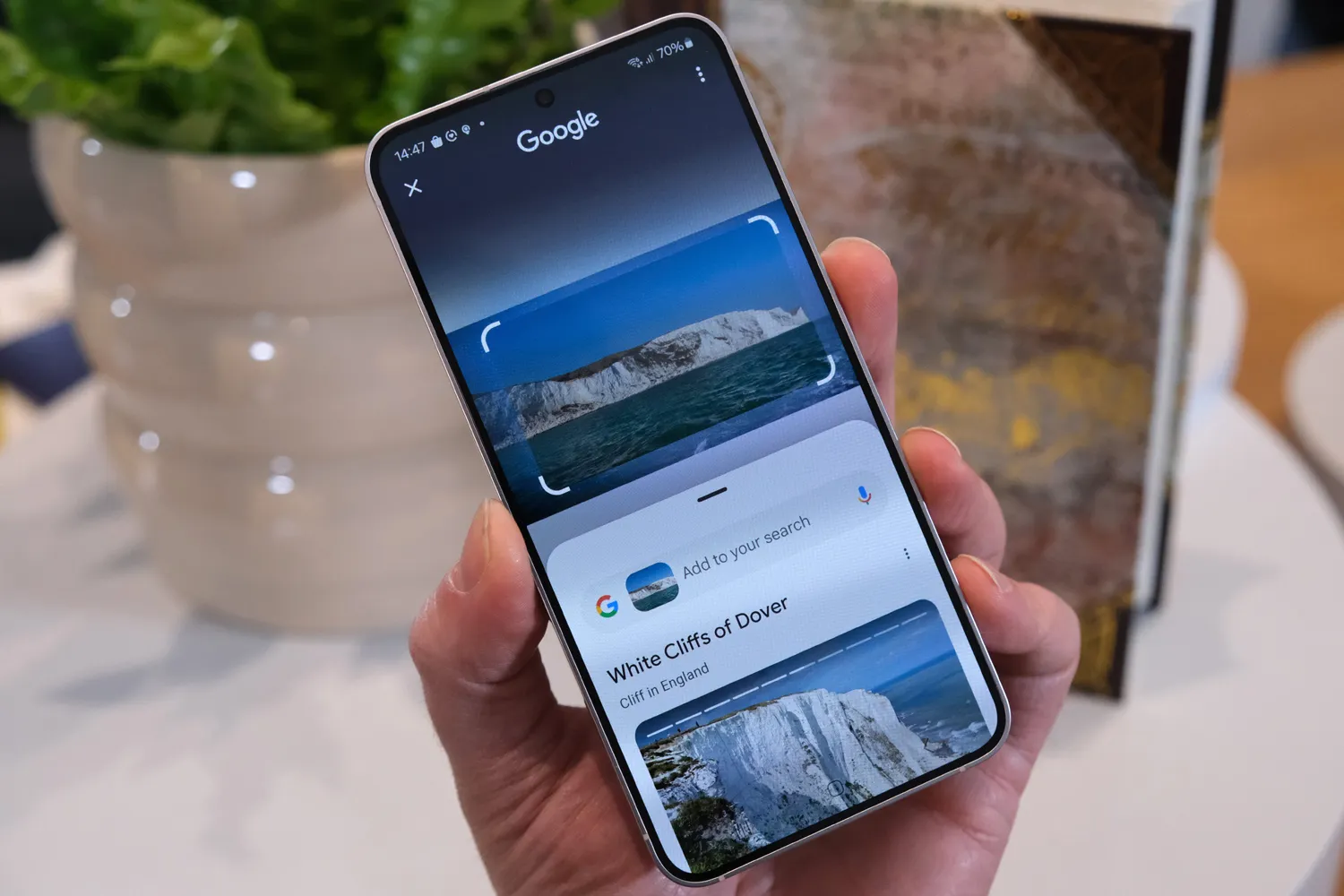
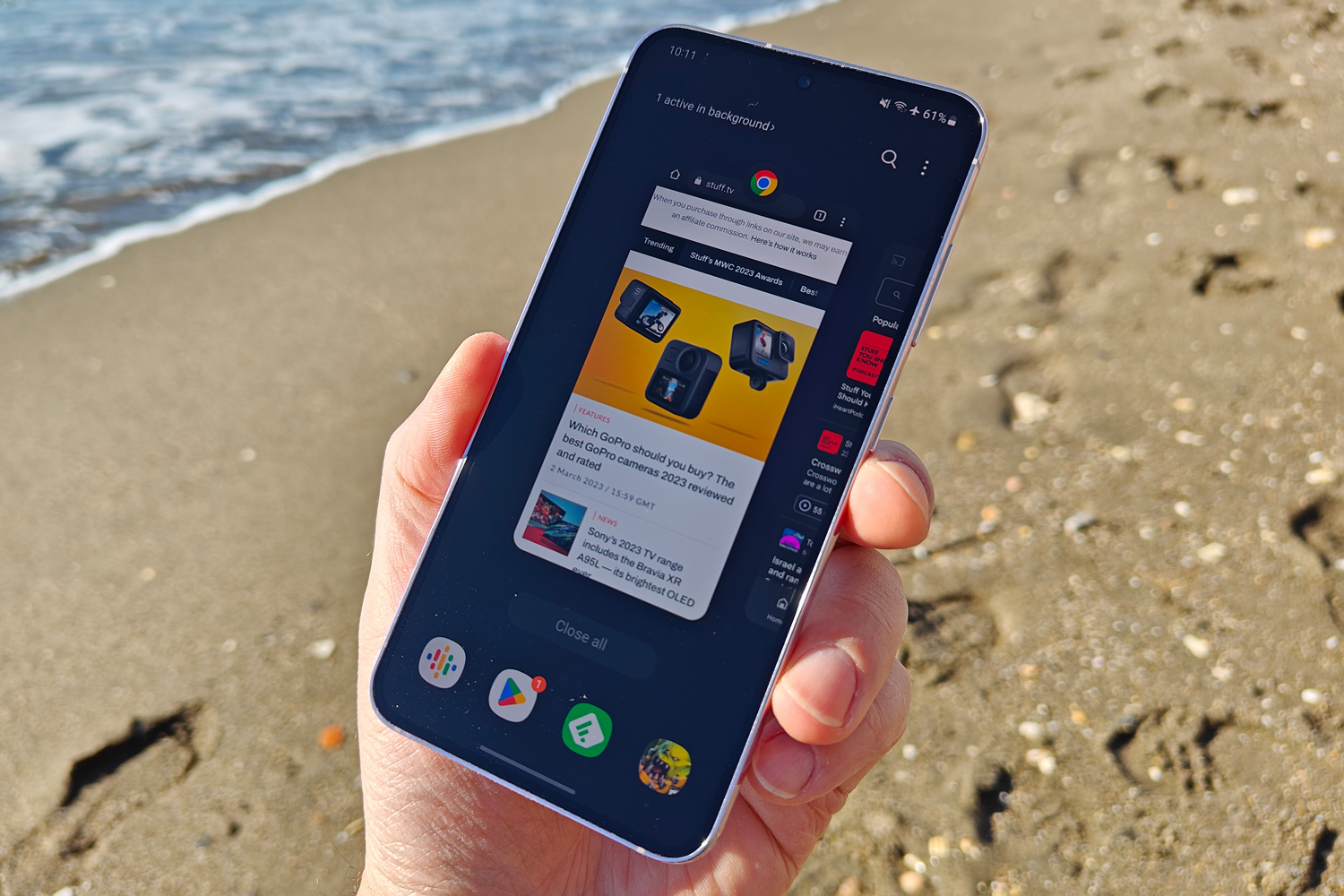
The Galaxy S23 range launched globally with Qualcomm’s Snapdragon CPU running the show, but this year the S24 and S24 Plus instead rock Samsung’s new Exynos 2400 processor. Or rather, they do in the UK and Europe. The US and certain other markets get a Snapdragon 8 Gen 3 chipset.
Historically, Samsung’s Exynos processors have fallen short in comparison to Qualcomm’s efforts, both in terms of battery life and power). That largely bears out in testing, with performance in benchmarks being slightly behind, and battery life a little less for Exynos silicon.
That decision is made even harder to swallow by the fact that the Galaxy S24 Ultra uses a beastly ‘For Galaxy’ variant of the Snapdragon 8 Gen 3, making it a genuine powerhouse.
On the RAM front, the Galaxy S24 matches its predecessor with 8GB RAM and 128GB/256GB storage options. The Galaxy S24 Plus has, however, had a bit of a RAM boost. This time it’s flaunting 12GB of RAM as standard, which is a welcome boost from the 8GB found in last year’s model. It has 256GB/512GB storage options.
In terms of software, Samsung has added in a bunch of AI features including Circle to Search (which lets you circle any onscreen object to initiate a web search for it, and is really more of a Google feature than a Samsung one), along with AI-accelerated speech recognition for impressive transcribing accuracy.
Battery life fans will also be pleased to hear that both the S24 and S24 Plus have had a modest capacity increase, with the former jumping up to 4000mAh (from 3900mAh), and the latter to 4900mAh (from 4700mAh). Unfortunately, the Galaxy S24 has the same charging speeds as the S23, with 25W wired and 15W wireless charging. I’m happy to report that the S24 Plus has at least had an upgrade in this department, now reaching 45W wired charging. Of course, you’ll have to supply your own power brick, as there isn’t one included in the box. This is 2024, after all.
Cameras: Same old, same old
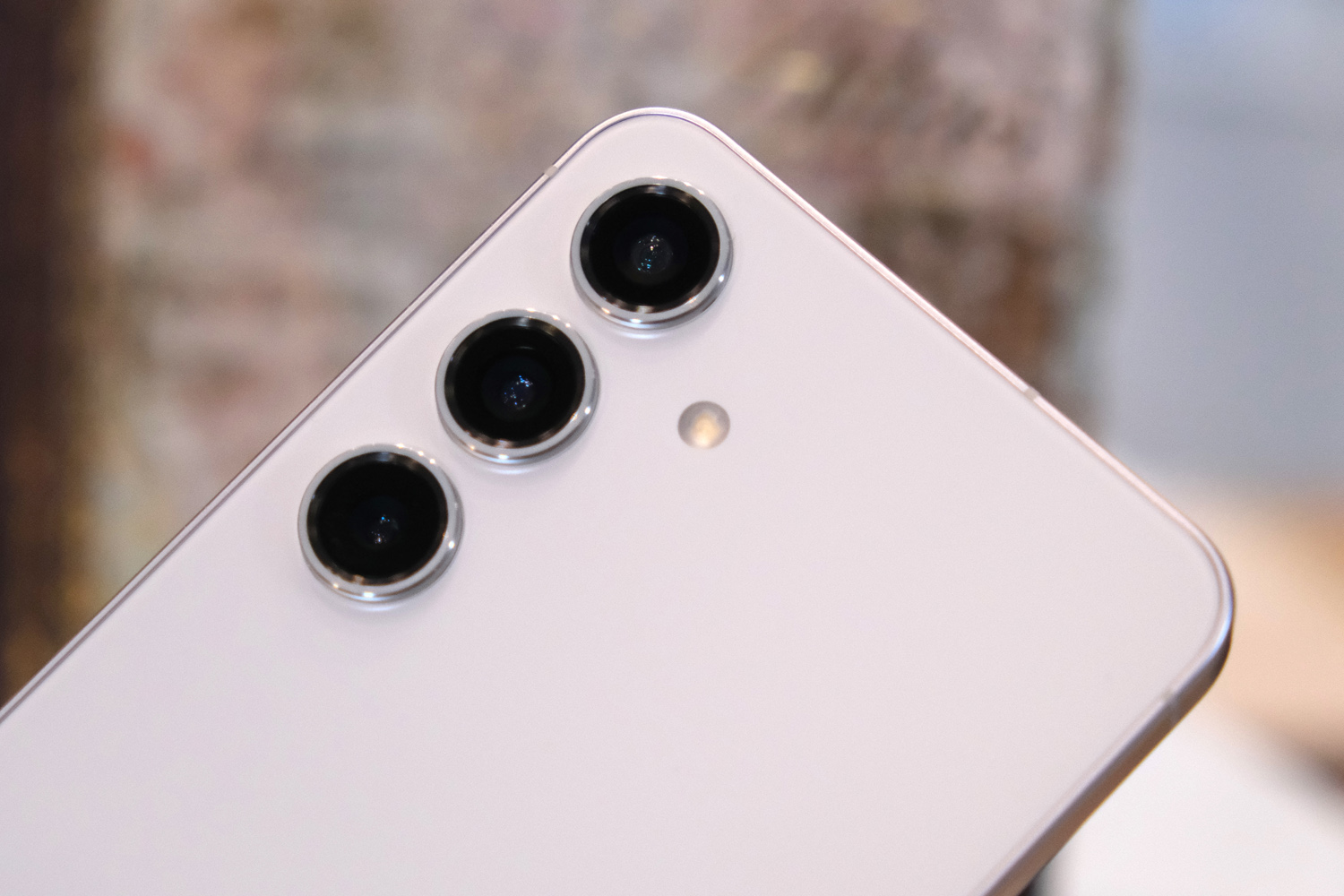
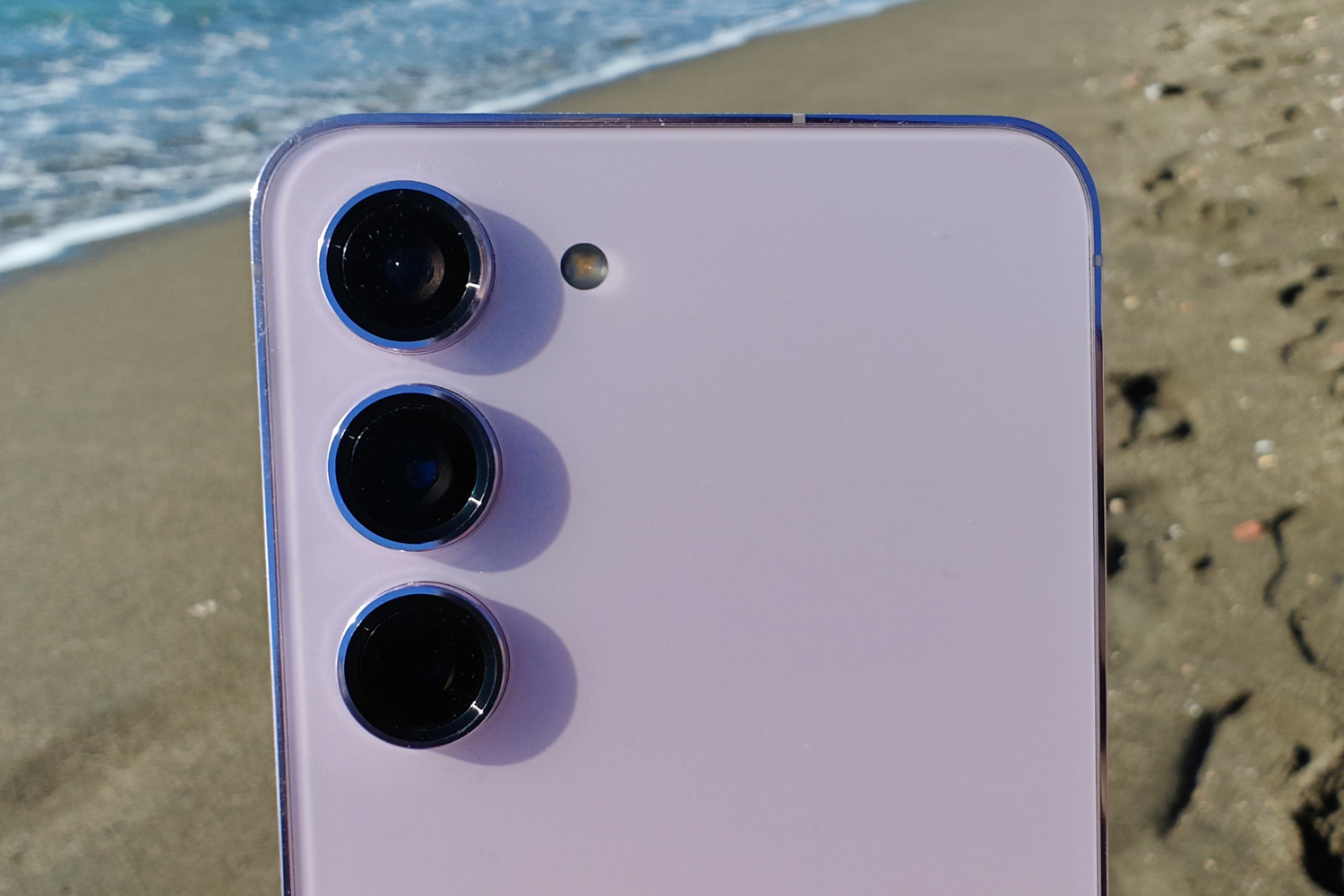
Photography fans will be disappointed to hear that the camera hardware on both the Galaxy S24 and S24 Plus is identical to that found on the S23 and S23 Plus. In fact, it remains unchanged from even the Galaxy S22 and S22 Plus. If you’re keeping track, that means the camera setup is, for all intents and purposes, three years old.
Given the insane progression I’ve seen in other flagships from the likes of Oppo, Honor, Vivo, and more, I wouldn’t blame anyone if they felt disappointed, but there has been a focus/improvement on the processing front, which I’ll get to in just a sec. Before that though, a quick rundown on the hardware:
Both the Galaxy S24 and S24 Plus have a 50MP main camera, a 10MP telephoto, and a 12MP ultrawide lens. The main module on both retains its f/1.8 aperture lens, dual pixel autofocus tech, and optical image stabilisation, while the 3x optical zoom telephoto maxes out at f/2.4, with PDAF and OIS. The ultrawide sticks with f/2.2 glass.
As for the processing, there’s algorithm updates and end-to-end HDR processing, in addition to live previews in the camera and gallery apps, which are all nice (and, hopefully drastically impressive) improvements to have. Honestly, pictures are fine – they won’t wow you like they might in previous years, but can still cut the mustard on social media.
Perhaps more exciting though, are the new generative AI tricks baked into the camera experience. Similar to features found on the Google Pixel 8 Pro, you’ll be able to select objects and remove them, or even replace them. A stray coffee cup in a shot could, for example, be completely erased from existence, or it could transform into a more visually pleasing object, like a candle.
Samsung Galaxy S24 vs Galaxy S23 verdict
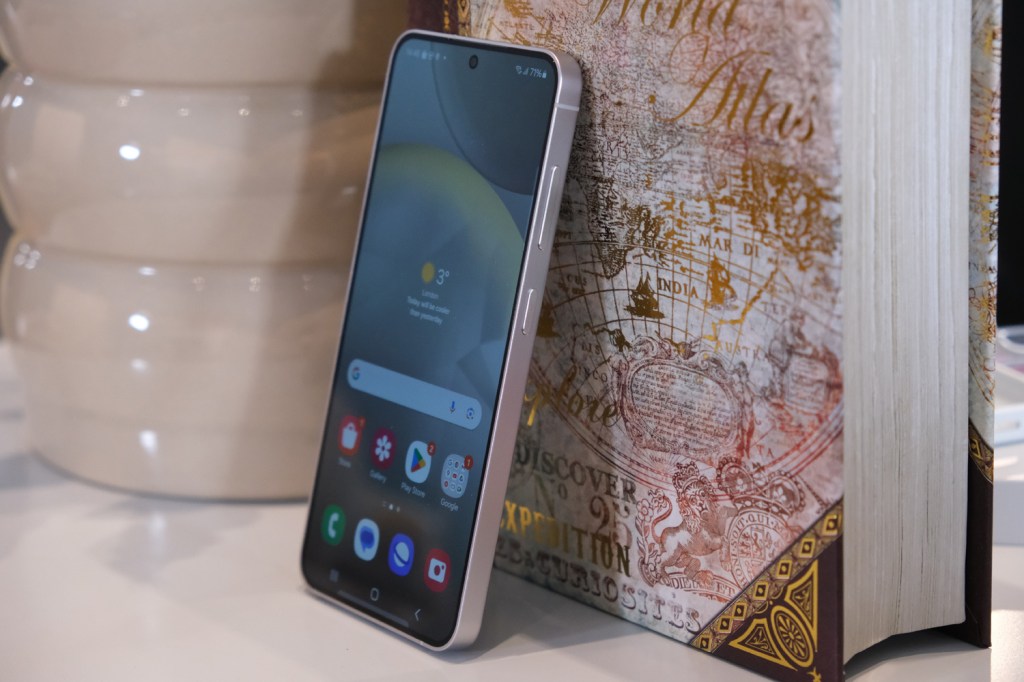
Between the minimal (but still noticeable) design changes and identical camera hardware, I’m hard-pressed to recommend an instant upgrade if you’re a current Galaxy S23 owner.
That’s not to say that the Galaxy S24 isn’t a better handset — it has a myriad of improvements including slicker styling, a slightly larger screen, larger battery, and camera processing/AI smarts — but with an Exynos processor running the new show there’s not a giant leap forward here. If you’re a few generations behind, though, then fill your boots. It’s still a five star phone.
The Galaxy S24 Plus has a bit more to say for itself, as it lands with a few additional key improvements. These include doubling the RAM of its predecessor, along with a fast charging speed, making it a more tempting proposition. If you can get one at a good price it’s a stellar smartphone – but keep in mind there’s no shortage of big-screen Android alternatives.



